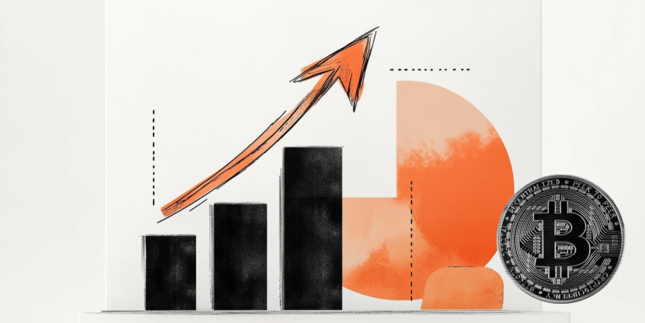- Indian Rupee edges higher on the softer US Dollar.
- India’s GDP number is expected to expand to 6.8% in the July–September quarter compared with the previous year.
- India’s GDP Quarterly for Q2 and US Core Personal Consumption Expenditure Price Index (PCE) will be in the spotlight on Thursday.
Indian Rupee (INR) drifts higher on Thursday as dovish comments from Federal Reserve (Fed) officials undermine the US Dollar demand. Asia's third-largest economy grew at 7.8% in the first quarter of the current fiscal year. India’s GDP number for the second quarter are scheduled to be released later in the day and is expected to grow at 6.8% in the July–September quarter compared with a year earlier.
Furthermore, Economic Affairs Secretary Ajay Seth expressed an optimistic view on the Indian economy on Wednesday, stating that the country is showing momentum and the growth rate in the second quarter is likely to be good. The Budget 2023-24 proposes to bring down the fiscal deficit to 5.9% of the GDP from 6.4% in the previous financial year. The government intends to decrease the budget deficit to less than 4.5% of GDP by 2025-26.
Investors will closely monitor India’s Gross Domestic Product (GDP) quarterly for the second quarter (Q2), which is scheduled for release on Thursday. Additionally, the development surrounding the last phase of state elections in India remains in focus, as a change in government might lead to policy modifications that could impact investors. On the US front, the Core Personal Consumption Expenditure Price Index (PCE) for October will be released, and this report could impact the expectations of the coming Fed decisions.
Daily Digest Market Movers: Indian Rupee strengthens amid the challenges
- Indian economy is projected to expand by 6.8% in the July-September quarter compared to the same period last year, according to a Reuters poll.
- Analysts anticipate that India's Gross Domestic Product will expand by more than 6.0% next year, making it the fastest-growing major economy.
- Reserve Bank of India (RBI) projected growth of 6.5% for the period of July to September.
- Domestic demand in India continues to be the primary driver of economic activity, as external demand remains fragile.
- US Gross Domestic Product Annualized for the third quarter (Q3) grew 5.2% in the third quarter (Q3) from the previous reading of 4.9%, above the market consensus of 5.0%.
- The US Core Personal Consumption Expenditure Price Index (PCE) for October is expected to ease to 0.2% MoM and 3.5% YoY.
- Federal Reserve (Fed) Governor Michelle Bowman said she sought to keep alive the possibility of more rate hikes, raising concerns about the longevity of inflationary pressure.
- Fed Governor Christopher Waller stated that the Fed won’t need to raise rates further and may begin cutting rates if inflation continues to ease over the next three to five months.
Technical Analysis: Indian Rupee keeps the positive outlook intact
The Indian Rupee trades strongly on the day. The USD/INR pair has traded in a familiar range of 82.80–83.40 since September. According to the daily chart, the continuation of the upward bias remains valid as the pair holds above the key 100-day Exponential Moving Average (EMA) with an upward slope. Further upside looks favorable, backed by the 14-day Relative Strength Index (RSI) that holds above the 50.0 midline.
The immediate target for bulls to beat will emerge at the upper boundary of the trading range at 83.40. The additional upside filter to watch is the year-to-date (YTD) high of 83.47, and finally a psychological round figure of 84.00. On the flip side, the 83.00 psychological mark offered support to USD/INR. A decisive break below 83.00 will see a drop to the confluence of the lower limit of the trading range and a low of September 12 at 82.80, followed by a low of August 11 at 82.60.
US Dollar price in the last 7 days
The table below shows the percentage change of US Dollar (USD) against listed major currencies in the last 7 days. US Dollar was the weakest against the New Zealand Dollar.
| USD | EUR | GBP | CAD | AUD | JPY | NZD | CHF | |
| USD | -0.83% | -1.74% | -0.86% | -1.61% | -1.71% | -2.57% | -1.35% | |
| EUR | 0.82% | -0.90% | -0.03% | -0.78% | -0.87% | -1.72% | -0.51% | |
| GBP | 1.68% | 0.87% | 0.85% | 0.11% | 0.02% | -0.83% | 0.37% | |
| CAD | 0.85% | 0.04% | -0.87% | -0.74% | -0.83% | -1.69% | -0.48% | |
| AUD | 1.58% | 0.76% | -0.12% | 0.74% | -0.09% | -0.94% | 0.26% | |
| JPY | 1.68% | 0.86% | -0.03% | 0.84% | 0.08% | -0.85% | 0.36% | |
| NZD | 2.50% | 1.69% | 0.81% | 1.64% | 0.93% | 0.84% | 1.19% | |
| CHF | 1.33% | 0.51% | -0.39% | 0.49% | -0.26% | -0.35% | -1.20% |
The heat map shows percentage changes of major currencies against each other. The base currency is picked from the left column, while the quote currency is picked from the top row. For example, if you pick the Euro from the left column and move along the horizontal line to the Japanese Yen, the percentage change displayed in the box will represent EUR (base)/JPY (quote).
GDP FAQs
What is GDP and how is it recorded?
A country’s Gross Domestic Product (GDP) measures the rate of growth of its economy over a given period of time, usually a quarter. The most reliable figures are those that compare GDP to the previous quarter e.g Q2 of 2023 vs Q1 of 2023, or to the same period in the previous year, e.g Q2 of 2023 vs Q2 of 2022.
Annualized quarterly GDP figures extrapolate the growth rate of the quarter as if it were constant for the rest of the year. These can be misleading, however, if temporary shocks impact growth in one quarter but are unlikely to last all year – such as happened in the first quarter of 2020 at the outbreak of the covid pandemic, when growth plummeted.
How does GDP influence currencies?
A higher GDP result is generally positive for a nation’s currency as it reflects a growing economy, which is more likely to produce goods and services that can be exported, as well as attracting higher foreign investment. By the same token, when GDP falls it is usually negative for the currency.
When an economy grows people tend to spend more, which leads to inflation. The country’s central bank then has to put up interest rates to combat the inflation with the side effect of attracting more capital inflows from global investors, thus helping the local currency appreciate.
How does higher GDP impact the price of Gold?
When an economy grows and GDP is rising, people tend to spend more which leads to inflation. The country’s central bank then has to put up interest rates to combat the inflation. Higher interest rates are negative for Gold because they increase the opportunity-cost of holding Gold versus placing the money in a cash deposit account. Therefore, a higher GDP growth rate is usually a bearish factor for Gold price.
Information on these pages contains forward-looking statements that involve risks and uncertainties. Markets and instruments profiled on this page are for informational purposes only and should not in any way come across as a recommendation to buy or sell in these assets. You should do your own thorough research before making any investment decisions. FXStreet does not in any way guarantee that this information is free from mistakes, errors, or material misstatements. It also does not guarantee that this information is of a timely nature. Investing in Open Markets involves a great deal of risk, including the loss of all or a portion of your investment, as well as emotional distress. All risks, losses and costs associated with investing, including total loss of principal, are your responsibility. The views and opinions expressed in this article are those of the authors and do not necessarily reflect the official policy or position of FXStreet nor its advertisers. The author will not be held responsible for information that is found at the end of links posted on this page.
If not otherwise explicitly mentioned in the body of the article, at the time of writing, the author has no position in any stock mentioned in this article and no business relationship with any company mentioned. The author has not received compensation for writing this article, other than from FXStreet.
FXStreet and the author do not provide personalized recommendations. The author makes no representations as to the accuracy, completeness, or suitability of this information. FXStreet and the author will not be liable for any errors, omissions or any losses, injuries or damages arising from this information and its display or use. Errors and omissions excepted.
The author and FXStreet are not registered investment advisors and nothing in this article is intended to be investment advice.
Recommended content
Editors’ Picks

AUD/USD: Further gains need more conviction
AUD/USD reversed two-daily pullbacks in a row on Tuesday, staging a decent comeback from Monday’s troughs near 0.6220 to the boundaries of the 0.6300 hurdle propped up by the RBA hawkish hold and firm data from Chinese business activity.

EUR/USD remains offered below 1.0800 ahead of “Liberation Day”
EUR/USD came under extra downside pressure on Tuesday, returning to the sub-1.0800 region on the back of tepid gains in the US Dollar and rising caution prior to Trump’s announcements on Wednesday.

Gold nears $3,100 as fears receded
Gold is easing from its fresh record high near $3,150 but remains well supported above the $3,100 mark. A generalised pullback in US yields is underpinning the yellow metal, as traders stay on the sidelines awaiting clarity on upcoming US tariff announcements.

US Government to conclude BTC, ETH, XRP, SOL, and ADA reserves audit next Saturday
Bitcoin price rose 3% on Tuesday, as MicroStrategy, Metaplanet and Tether all announced fresh BTC purchase. However, BTC price is likely to remain volatile ahead of the anticipated disclosure of U.S. government crypto holdings, which could fuel speculation in the coming days.

Is the US economy headed for a recession?
Leading economists say a recession is more likely than originally expected. With new tariffs set to be launched on April 2, investors and economists are growing more concerned about an economic slowdown or recession.

The Best brokers to trade EUR/USD
SPONSORED Discover the top brokers for trading EUR/USD in 2025. Our list features brokers with competitive spreads, fast execution, and powerful platforms. Whether you're a beginner or an expert, find the right partner to navigate the dynamic Forex market.

